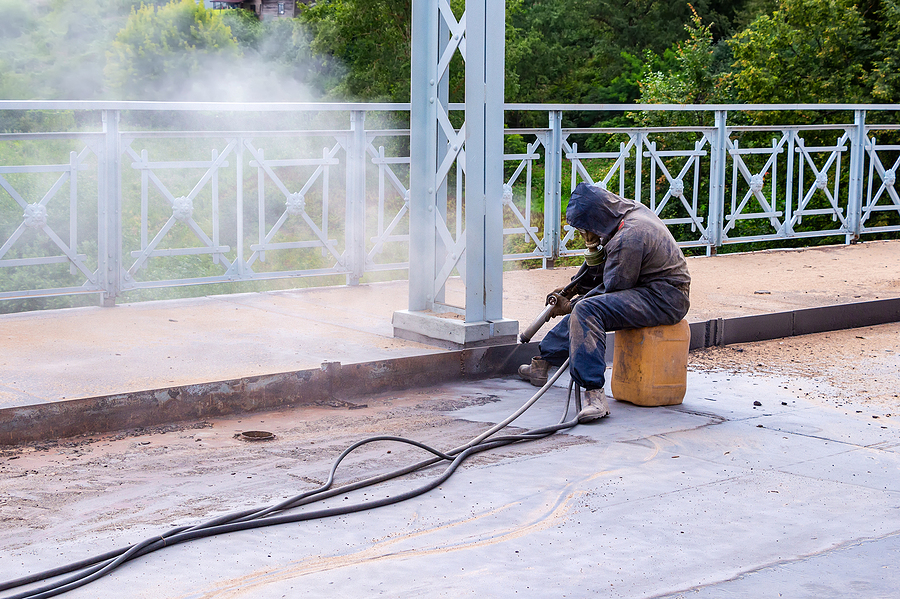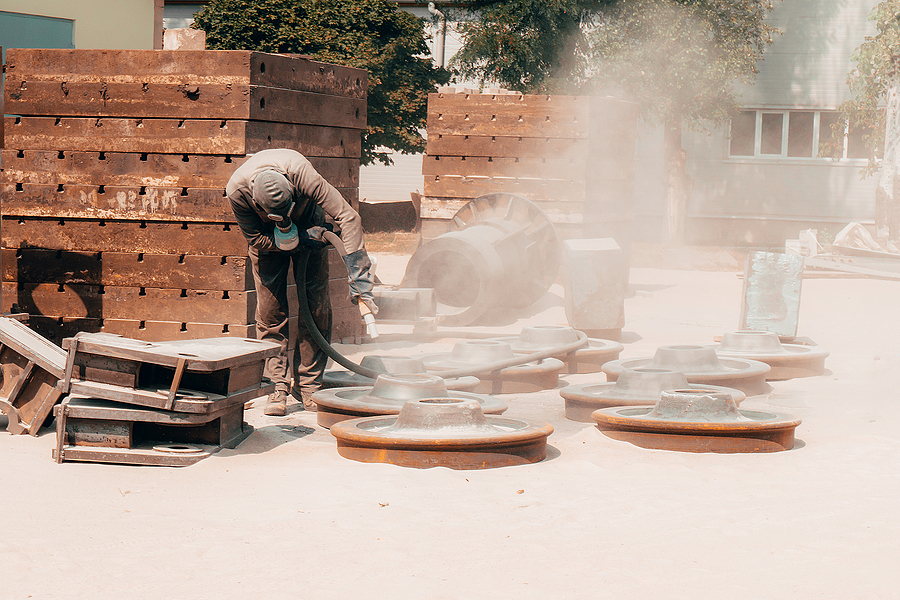Concrete sandblasting is a process that involves the use of abrasive materials to remove grit, stains, and mould from surfaces. With concrete sandblasting, the material is shot at high pressure to create a surface that can be painted over or finished in another way, or simply livened up by removing excess.
Concrete sandblasting has many advantages over other methods because it does not contain toxic chemicals like bleach or acid. This article will go over the basics on concrete sandblasting, so you can decide whether its right for your project and bring a few factoids with you on your next night out to impress the tradies in your group.
The Fundamentals
Concrete sandblasting is a process that uses high pressure to remove grime from surfaces. It takes the form of small particles, often made from glass or metal, and can be used on almost any surface including brickwork and plaster.
In many cases it’s preferable to other chemical cleaning methods because there are no toxic chemicals involved in concrete sandblasting. This means it’s safe for food areas like kitchens, bathrooms, and restaurants where bleach would not be appropriate due to health concerns. While it’s not without its drawbacks, the benefits far outweigh the cons in this instance, and sure enough, concrete sandblasting is on the rampant rise.
The Typical Process
Concrete sandblasting is fairly simple and straightforward in its procedural considerations. The expert will start by inspecting a space in order to determine the best angle of approach, and the level of force required for an adequate result.
They will then apply a fine mist of water around the area before beginning their work on concrete sandblasting. This ensures that material is removed from surfaces and not just redeposited elsewhere, which can be an all-too-common problem with such abrasive methods.

Once they’ve got it down pat, the expert then utilises compressed air that is pumped through nozzles at high-velocity speeds to remove unwanted materials like paint or deposits without damaging what’s left behind; instead, merely knocking off any loose debris while preserving more stubborn substances like peeling wallpaper and flaking plaster for later removal (by other means). It’s best to leave concrete sandblasting until after other methods have been tried, however; this way you can see what works best before committing the time and resources for an alternative process.
Despite its name, concrete sandblasting isn’t limited to just that material alone–it’s actually one of the most versatile forms of dry excavation out there. Other surfaces it is suitable for include stucco, brickwork, slabs, pavers, countertops, patios, driveways, even stone walls. Just about anything with a porous surface will benefit from being exposed through this technique since it provides much-needed ventilation without compromising structural integrity or aesthetics in any way.
Why It’s So Effective and Popular
The reason why the method is so widely utilised is because concrete sandblasting is so efficient. Its non-chemical nature makes it safe for the environment and hard surfaces, while simultaneously being safer than harsher chemicals like bleach which are used in more traditional alternatives. It doesn’t cause corrosion or rusting on metal surfaces either– making it an ideal way of exposing aggregate for decorative projects that will be placed outdoors where they’re at risk of exposure to rainwater over time.
As there is increasing awareness surrounding the use of dangerous and corrosive chemicals in pursuit of a more effective clean, the use of older schools of thought are making a comeback, bolstered by the technology available. It’s through this that the practice has become stock-standard for many people around the country as the future of surface preparation and upkeep.
